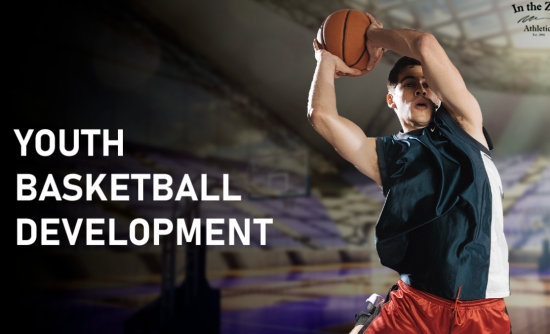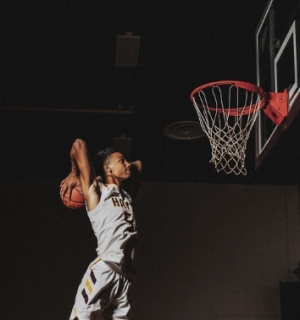What the trajectory of professional development looks like in youth basketball, the influence of infrastructure, training, and social environment on performance.
Youth Basketball Development: Training, Exposure, and Pathways to the Pros
Betting on youth basketball is becoming an increasingly popular area of betting. Niche teams are performing well, and many exclusive markets have increased odds that will appeal to anyone who wants to make money from their bets.
In this article, we with inthezonesports.biz take an in-depth look at key aspects of developing young basketball players: training methods, the importance of game practice and tournaments or international exchanges, and the actual journey from the school court to the professional arena.
Training Process
Let's look at the main directions in the training of young athletes.
Ball Handling and Basic Skills
The foundation of a successful basketball career is confident ball handling. As part of this task, athletes must master dribbling - the ability to dribble with both hands at different speeds, playing with changes in direction and speed, as well as passes and their variations - chest, one-handed, shoulder, and catching the ball under pressure. Throws also play a big role in the preparation - setting the hands, footwork, mastering throws from movement, standing, jumping, from corners and middle distances.
Without these basic skills, further development is impossible. Regular practice of technique in training builds automaticity, simplifies decision making and contributes to game efficiency.
Physical Fitness and Endurance
Basketball requires not only masterful ball handling, but also excellent physical fitness. The training programme for young athletes should include:
- Strength exercises for the legs, corset and shoulder girdle so that athletes can withstand physical pressure;
- Speed and strength training including sprints, jumping jacks, reaction exercises;
- Aerobic and anaerobic endurance - interval training, cross-country;
- Alternating loads as well as developing co-ordination and mobility - working in ladders, stability and balance exercises.
The variety of loads helps you avoid injury, develop a full body and stay competitive on the court.
Coaching and Individualisation
Effective training depends on a proper coaching approach that includes an assessment of each athlete's strengths and weaknesses, a balanced programme that takes into account technical, tactical and physical aspects, a gradual increase in difficulty as the level of training increases, attention to mental toughness, teamwork and leadership. A responsible coach will always help young athletes to develop potential qualities and overcome risk zones.
Participation in Competitions
The true potential of athletes in youth basketball is revealed only when they participate in competitions.
Local and Regional Tournaments
Getting to the highest level starts with regular participation in matches. Local championships, street tournaments and school competitions provide invaluable experience. Athletes learn to analyse game situations in real time, acquire the ability to adapt to the opponent's level, develop a deeper understanding of the rules of play, defence, rebounding and shot selection.
Open Camps and Screenings
Participation in specialised basketball camps is an opportunity to make a name for yourself and attract the attention of clubs and leagues. Most of these events are conducted with the participation of professional coaches, scouts and university programme coaches. At the camps, athletes receive professional feedback, the opportunity to get in front of managers and scouts, and to get involved in the talent point programme of the system.
International Tournaments and Exchanges
For the most ambitious young basketball players, participating in international tournaments brings great experience. Here you can compare yourself with participants from other countries, adapt to different styles of play, and get noticed by foreign coaches or colleges. This experience often becomes a turning point in the careers of many athletes.
Ambition and Development
Let's look at what their trajectory looks like according to different types of interventions.
Junior Careers and Professional Clubs
The youth programmes of professional teams provide key resources: coaching staff, recreational facilities, and regular opponents. Once in a youth academy, an athlete receives psychophysiological support, individual training plans, mentoring from experienced athletes, and a stable playing load.
College or University
Many professionals started out in college leagues in the United States. It is a full range of educational support, an opportunity to combine sport and study, a visible stage for NBA scouts and agencies. Even users who have not gone to the USA get experience, participation in the university system or exchange programmes for new knowledge and connections.
Contracts, Agents and the Transition to Adult Basketball
The appearance of an agent is important: he helps to negotiate contracts, transfers and sponsorship agreements. Before entering the professional world, the young man undergoes psychological and social training, learns financial literacy, and manages his public image.
Mental Development
It is equally important to keep an eye on your emotional state during gameplay.
Work on Psychological Resilience
Professional training includes stress training, concentration development and emotion control techniques. It is important for young men to be able to manage anxiety, maintain composure, and recover from setbacks.
Goals, Motivation and Responsibility
Only a clear vision and planning help a young man to stay on track. Short and long-term goals are important (current training, year, 3-5 years), work on self-control and discipline and a balanced life: basketball, studies, holidays, family.
Role of Environment and Support
The training process will not be effective unless the appropriate context is created for it.
Infrastructure, Accessibility and Resources
Infrastructure support - gyms, courts, medical services, camps - is critical for sustained skill growth. Equipment availability depends on investment in co-operation with clubs and federations.
Education and Career Planning
Mixing the game itself with studies gives the athlete an alternative path academic scholarships, exchange programmes, parallel careers (coach, sports analyst), psychological and management support.
Obstacles and Difficult Moments
In training, athletes also face limitations that can affect their performance.
Injuries and Recovery
Sports are associated with risks. These are often: sprains, bruises, joint injuries. The work of a rehabilitator and a medical approach help to avoid long pauses.
Burnout and Low Motivation
Sometimes too much stress can lead to apathy. It is therefore important to plan rest, diversify leisure time with different types of activity (swimming, yoga, chess) and pause for psychological recovery.
Unfavourable Environment
Many young athletes face social pressure, financial instability and lack of support. Therefore, support from federations, access to grants and scholarships, psychological and social support are extremely important to them.
Youth basketball is not just preparation for professional contracts. It is personality formation: self-discipline, team spirit, leadership mindset.






Comments powered by CComment